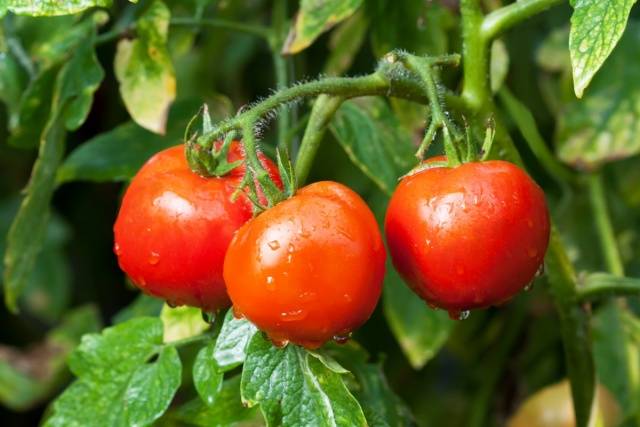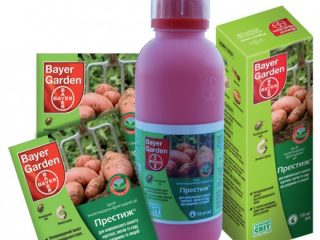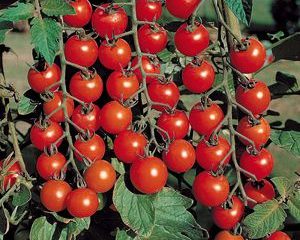Content
The Russian Yablonka tomato seems to be specially created for lazy gardeners or for summer residents who visit their plot only on weekends. The thing is that...This variety is very unpretentious, tomatoes can grow in almost any conditions, they do not need regular care, the bushes do not need pinching and shaping, and the plants rarely get sick. But the Yablonka yields an excellent harvest: from each bush you can get up to 100 tomatoes, all the fruits are medium in size, round and even, as if created for preservation and pickling.
A description of the Russian Yablonka tomato, photos and characteristics of the fruit are given in this article. Here you can also find reviews from gardeners about the variety and recommendations for planting and caring for Yablonka tomatoes.
Description of the variety
The variety is considered early ripening because tomatoes ripen within 120 days after the first seedlings appear. The bushes belong to the standard variety, the plants are determinate, but sometimes reach a height of 200-230 cm. There are few shoots on the tomatoes, they are not too spreading, the foliage is average.
Typically, Yablonka Russia tomatoes reach a height of 100 cm, do not require pinching or pinching, and have a limited growth point. Tomato shoots are thick, powerful, and in appearance they look like potato stems.
The characteristics of the Yablonka variety are as follows:
- tomatoes are drought-resistant and do not require frequent and abundant watering;
- bushes rarely get sick, as they are immune to almost all viral and bacterial infections;
- the fruits are round, medium in size, bright red in color, have a thick peel, do not crack and are easily transported;
- the average weight of tomatoes is 100 grams, tomatoes have a strong aroma, pleasant sweet and sour taste;
- the yield of the Yablonka Rossii variety is high - from 50 to 100 tomatoes can be harvested from each bush;
- fruiting of tomatoes is extended - tomatoes begin to ripen in early August and until the last days of September you can enjoy fresh fruits;
- The variety bears fruit best in warm climates or in greenhouse conditions, but Yablonka is also suitable for colder regions.
A huge advantage of this domestic variety is its unpretentiousness: even with minimal effort on the part of the gardener, the tomato will delight you with a stable harvest. But the Yablonka tomato simply has no shortcomings - it showed itself only from its best side.
How to grow the Russian apple tree
There are no special recommendations regarding planting, growing and caring for the Yablonka Russia variety - these tomatoes are grown just like any other. A gardener simply needs to grow or purchase strong seedlings, plant them in beds or in a greenhouse and periodically check the condition of the bushes.
Growing seedlings
The Yablonka tomato variety is an early variety, but like other tomatoes, it is recommended to grow it through seedlings in the middle zone. Seeds should be purchased in good stores or from trusted suppliers; it is quite possible to collect planting material yourself from a previous harvest.
Apple tree seeds should be sown for seedlings in early March. Before planting, it is recommended to soak the seeds in a slightly pink solution of manganese or treat them with Ecosil, previously diluted with water.
The soil for planting tomato seeds is fertile. Special purchased soil for tomato seedlings is suitable. In order for tomatoes to better tolerate transplanting to a permanent location, experienced gardeners advise taking soil for seedlings from the garden and mixing it with humus, superphosphate, peat and ash.
After planting the seeds, the containers with seedlings are covered with film and placed in a warm place, away from sunlight. When the first shoots appear (3-5 days), the film is removed and the container with the seeds is placed on a windowsill or sunlit table. The room temperature should be comfortable - 20-24 degrees. As the soil dries, tomato seedlings are watered using sprinklers.
When a pair of true leaves grow on the tomatoes, they pick it up. Tomatoes must be pruned in order to stimulate the root system to grow not only in length, but also in width. This significantly increases the chances of tomatoes quickly and painlessly adapting to a new place.
Picking Yablonka tomatoes involves transferring each plant into a separate cup. Before transplanting, the soil is thoroughly moistened, the tomatoes are removed very carefully so as not to damage the roots and fragile stem.
10-14 days before the upcoming transplant into the ground, Yablonka Russia tomatoes begin to harden. To do this, first open the window, then gradually take the tomato seedlings outside or onto the balcony. The procedure time is increased gradually, eventually leaving the tomatoes to spend the night outside (if the temperature does not drop below +5 degrees).
Planting tomatoes
Apple seedlings are transferred to the ground or to a greenhouse at the age of two months. By this time, 6-8 true leaves should appear on the tomatoes; the presence of flower clusters is acceptable.
Typically, early-ripening tomatoes are planted in garden beds in mid-May. By this time, the threat of return frosts should have passed, so the exact time of planting depends on the climate in a particular region.
You need to choose a place for the Yablonka Russia variety that is sunny, protected from strong winds and drafts. The bushes grow quite tall, there are a lot of fruits on them, so the shoots can easily break off from the wind.
The best place for planting tomato seedlings is in beds where pumpkins, root vegetables (carrots, beets) or onions and legumes grew last year.
First of all, you need to make holes for tomato seedlings. It is recommended to plant the Russian apple tree at a distance of 50-70 cm between the bushes.If the plantings are more dense, the tomatoes will turn out small and not as tasty, and the tomato yield will decrease.
First, pour a handful of rotted manure into each hole and cover the fertilizer with a layer of soil. Only after this the tomato is transferred along with the earthen lump on the roots. Compact the soil around the tomato with your hands and water the seedlings with warm water.
How to care
As mentioned above, the variety does not require complex care. But the gardener must still perform some mandatory actions.
For a good harvest, you need to:
- 10-12 days after planting seedlings feed tomatoes. As a fertilizer for the first feeding, it is best to use mullein diluted with water or weed tincture. Fertilizer is poured under the root, being careful not to stain the leaves and stem of the tomatoes.
- Every two weeks around tomatoes scatter wood ash.
- To reduce moisture evaporation, use mulch. The soil around the Russian Yablonka tomatoes is sprinkled with straw, dry grass, sawdust or humus. This will also reduce the risk of plant rot.
- When the tomatoes enter the active growth phase (the height of the bushes begins to increase rapidly), they tie up hemp rope or strips of soft fabric.
9 - Of all the diseases for the Russian apple tree, the most dangerous is late blight. To prevent infection of tomatoes, the greenhouse must be regularly ventilated, do not get carried away with watering, and constantly loosen the soil. Both in open ground and in greenhouses, it is better to use preventive agents against late blight.
- These tomatoes do not need frequent watering.If there is no rainfall for a long time, the soil moisturize with warm water. After a couple of days, the soil is loosened or mulch is used.
Harvesting must be done in a timely manner to prevent fruit rotting on the bushes. These tomatoes ripen well indoors, so they can also be picked green (for example, when cold weather suddenly sets in).
Reviews of tomatoes Yablonka Russia
Conclusion
The Yablonka Rossii tomato variety was simply created for growing in domestic gardens and dachas. These tomatoes are planted both in the ground and in the greenhouse - everywhere they give a consistently high yield. At the same time, there is practically no need to care for the plantings - the tomato grows on its own.The fruits are smooth, beautiful (as evidenced by the photo) and very tasty.
If a gardener grows seedlings on his own, it is better to sow more seeds, since for this variety they have poor germination.


















